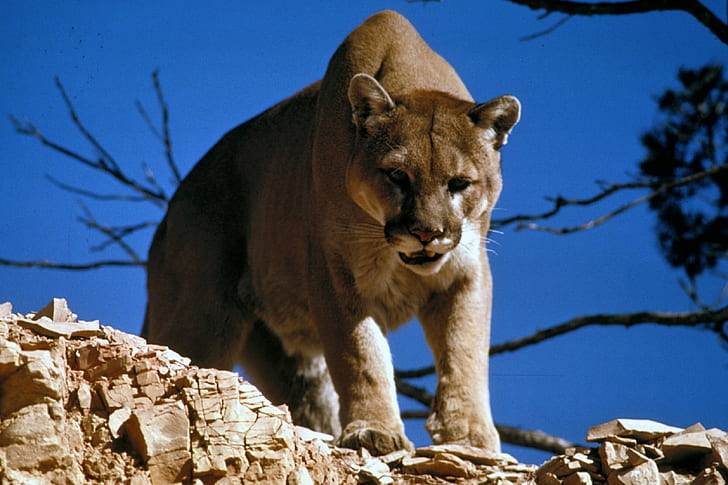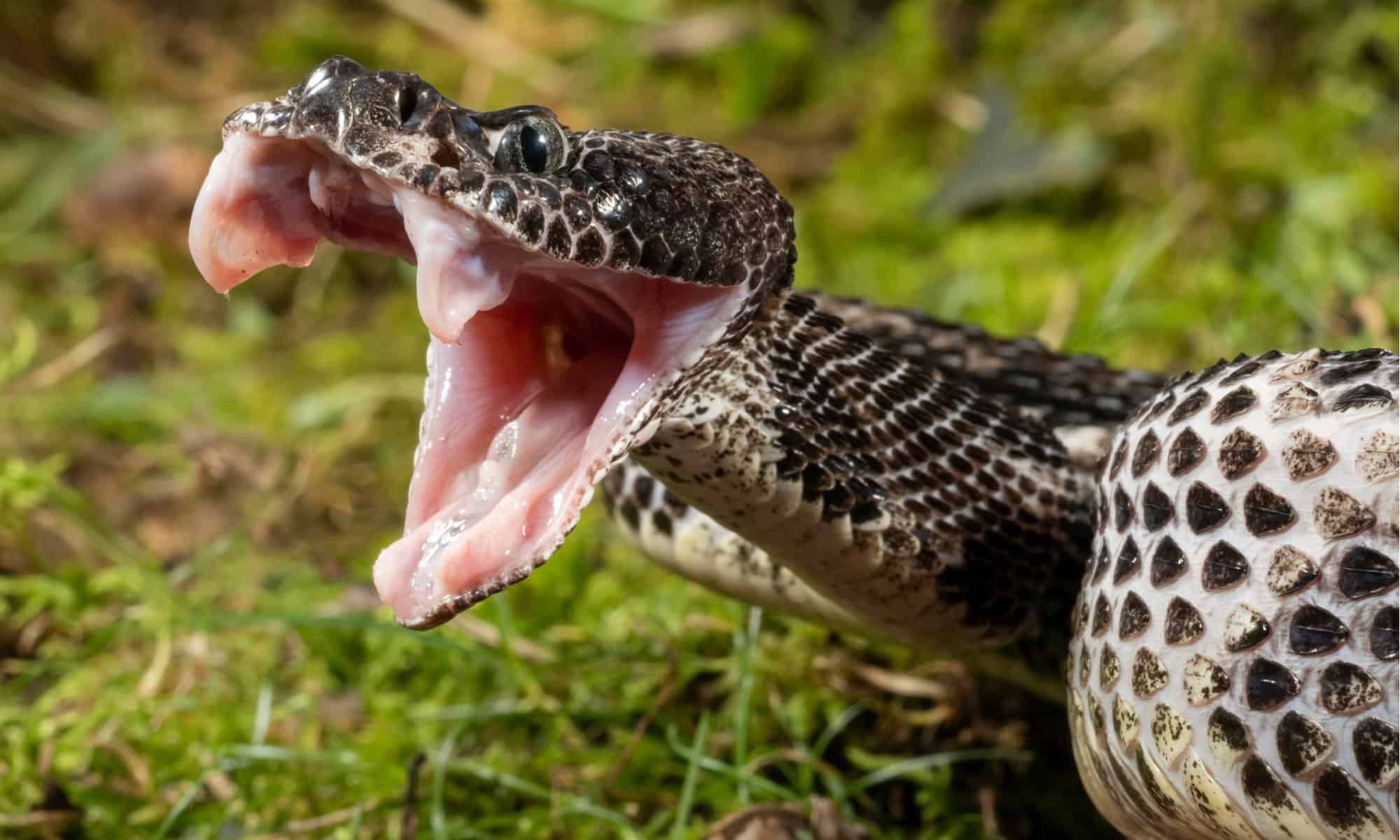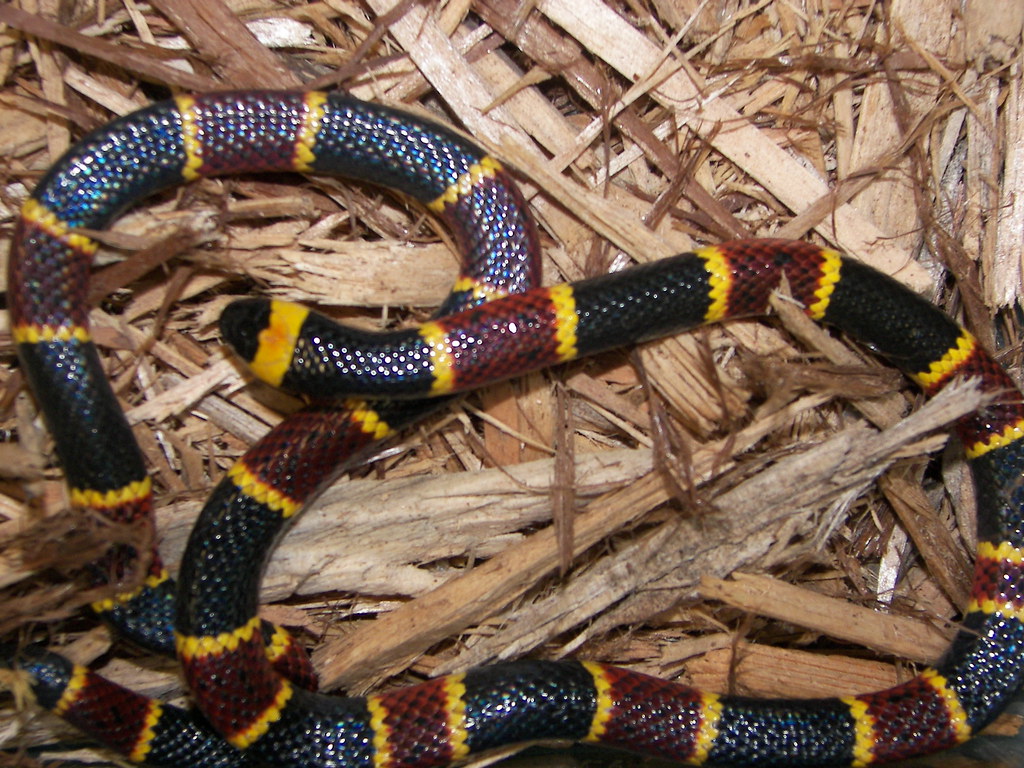
North America, a continent celebrated for its breathtaking natural beauty and sprawling wilderness, is also home to an astonishing array of wildlife. From majestic apex predators roaming vast forests to cryptic venomous creatures hidden in the undergrowth, these animals command both our awe and our respect. While the vast majority of human-wildlife interactions are benign, understanding the potential dangers posed by certain species is not just prudent—it’s essential for anyone venturing into their domain.
This comprehensive guide illuminates the most dangerous wildlife species found across America, offering insights into their behaviors, habitats, and, most critically, how to safely coexist. Our goal is to equip you with life-saving knowledge, transforming potential fear into informed caution, so you can enjoy the wonders of nature responsibly. By understanding these creatures, we can better appreciate their place in the ecosystem and protect ourselves and our loved ones during outdoor adventures.
Join us as we embark on a journey through the wild heart of North America, exploring the terrestrial titans and venomous vipers that demand our attention. We’ll uncover practical strategies and expert advice for navigating encounters with these magnificent but potentially deadly animals, ensuring your next outdoor experience is as safe as it is unforgettable. Prepare to be informed, amazed, and empowered with the knowledge to respect the wild.

1. **American Alligator: The Ancient Predator of the Southeast**The American alligator (Alligator mississippiensis) is one of the most formidable predators inhabiting the southeastern United States. These ancient reptiles can reach lengths of up to 15 feet and weigh as much as 1,000 pounds. Their crushing bite force, exceeding 2,000 pounds per square inch, is powerful enough to shatter bones, making them an undeniable force in wetland ecosystems.
Alligators typically avoid human contact, but they become particularly dangerous during mating season (April to June) and when protecting their young. Florida leads the nation in alligator attacks, averaging about 10 incidents annually. Fatalities, though rare, occur when humans encroach on alligator territory, often near freshwater bodies. The increased development of wetland areas has created more opportunities for human-alligator encounters, making awareness critical in states like Florida, Louisiana, Georgia, and the Carolinas.
A common and dangerous practice is feeding alligators, as this conditions them to associate humans with food. This strips them of their natural fear, making them more likely to approach and attack. Never feed an alligator, as it can lead to severe consequences for both humans and the animal itself.
If encountered, maintaining a safe distance is paramount. Experts recommend staying at least 30 feet away from these powerful reptiles to avoid provoking them or being perceived as a threat. By respecting their space and natural behaviors, we can minimize risks and ensure these iconic creatures continue to thrive alongside us.

2. **Brown Bears (Including Grizzlies): North America’s Apex Land Carnivores**Brown bears, including the formidable grizzly subspecies (Ursus arctos horribilis), are among North America’s most powerful and potentially dangerous land predators. Adult males typically weigh between 400-700 pounds, though exceptional specimens can exceed 1,500 pounds. These imposing omnivores possess incredible strength, capable of flipping boulders weighing hundreds of pounds, and can reach speeds of 35 mph despite their massive size.
While brown bears generally avoid human encounters, they become particularly dangerous when surprised, when sows are protecting cubs, or when habituated to human food. Since 2000, brown bears have been responsible for approximately 10-15 human fatalities in the United States and Canada combined, primarily in Alaska, Montana, Wyoming, and Idaho. Their unpredictability and capacity for serious injury make them especially concerning for wilderness enthusiasts.
Bear safety experts recommend carrying EPA-approved bear spray in bear country and knowing how to use it. Traveling in groups while making noise can help prevent surprising a bear. Properly storing food in bear-resistant containers is vital to prevent bears from associating humans with easy meals.
It’s also critical to know how to react differently to defensive versus predatory bear behavior. Playing dead may help during defensive attacks, such as when a sow protects cubs. However, fighting back is crucial if a bear appears to be stalking you as prey, indicating a predatory intent.

3. **Mountain Lions (Cougars/Pumas): The Elusive Feline Hunter**Mountain lions (Puma concolor), also known as cougars or pumas, are North America’s largest wildcats and apex predators. They have an extensive range across the western United States and Florida. These solitary and primarily nocturnal hunters can weigh up to 220 pounds and possess remarkable physical abilities, including leaping 40 feet horizontally and 15 feet vertically.
Though rarely seen due to their elusive nature, mountain lions are equipped with powerful jaws, sharp claws, and predatory instincts that make them potentially dangerous. Fatal attacks on humans remain extremely rare, with fewer than 30 documented in North America over the past 100 years. However, non-fatal encounters have increased as human development expands into cougar territory.
Mountain lions typically target the neck and head during attacks, making children particularly vulnerable. If confronted, wildlife experts recommend making yourself appear larger by raising arms and opening jackets, maintaining eye contact, and making loud noises. These actions can help deter an attack.
Crucially, if a mountain lion attacks, fighting back aggressively is the recommended course of action, rather than playing dead. Understanding cougar behavior and taking appropriate precautions when hiking in their territory significantly reduces the already minimal risks, allowing for safer exploration of their habitats.

4. **Rattlesnakes: The Warning Rattle of North America**Rattlesnakes are among North America’s most dangerous venomous reptiles, responsible for the majority of snakebite fatalities in the United States. The country hosts 16 rattlesnake species, with the Eastern Diamondback and Western Diamondback being particularly dangerous due to their size, potent venom, and lengthy fangs. Their venom contains hemotoxins that destroy tissue, disrupt blood clotting, and can cause organ failure if left untreated.
Approximately 7,000-8,000 venomous snakebites occur annually in the US, with rattlesnakes accounting for roughly 65% of these incidents. Despite this frequency, modern medical intervention has reduced the fatality rate to less than 1% of venomous bites. Rattlesnakes are found across the continental United States but are most concentrated in the southwest desert regions.
These snakes are named for their distinctive warning rattle, a sound produced by interlocking segments of keratin at the end of their tails. This sound serves as a crucial signal to potential threats, urging them to keep their distance. However, it’s important to note that rattlesnakes don’t always rattle before striking, especially if surprised or feeling immediately threatened.
Hikers should remain vigilant by staying on designated trails, wearing proper footwear, and listening for the distinctive warning. If you hear a rattle or spot a rattlesnake, calmly and slowly back away, creating as much distance as possible. Never attempt to handle or provoke a rattlesnake, as this significantly increases the risk of a bite.

5. **Black Widow Spiders: The Potent Neurotoxin of the Web**The black widow spider (Latrodectus spp.) is one of North America’s most notorious arachnids. The female is instantly recognizable by her glossy black body and distinctive red hourglass marking on the underside of her abdomen. Though small, measuring about 1.5 inches including legspan, the female black widow produces potent neurotoxic venom approximately 15 times stronger than a rattlesnake’s on a per-volume basis.
These spiders are found throughout the United States, particularly in warmer southern and western regions. They make their homes in dark, secluded areas like woodpiles, under eaves, and in dense vegetation, often in undisturbed corners of garages or sheds. Black widows rarely bite humans unless directly threatened or accidentally pressed against the skin.
When bites do occur, symptoms can include intense pain at the bite site, muscle cramping, abdominal rigidity, sweating, and nausea. In severe cases, particularly for children, elderly individuals, and those with compromised immune systems, respiratory difficulties can arise. The pain can radiate throughout the body, making it a very uncomfortable experience.
While fatalities are extremely rare in the modern era due to available medical treatment, black widow bites require prompt medical attention. Approximately 2,500 black widow bites are reported annually in the United States, with many more likely going unreported. Understanding their preferred habitats and taking precautions when reaching into dark areas can significantly reduce the risk.

6. **American Bison: The Surprising Power of Our National Mammal**The American bison (Bison bison), our national mammal and the largest land animal in North America, can weigh up to 2,000 pounds and stand six feet tall at the shoulder. Despite their massive size and placid appearance, bison injure more visitors in Yellowstone National Park than any other animal. These powerful herbivores can charge at speeds reaching 35 mph and possess surprising agility.
Bison are particularly dangerous when people violate the recommended 75-foot safety distance. Contrary to their lumbering appearance, bison can pivot quickly and use their horns and massive heads as formidable weapons. In recent years, Yellowstone has documented an average of 2-3 bison-related injuries annually, many resulting from tourists attempting to take selfies or approach calves.
Incidents peak during summer months when visitor numbers are highest and during the July-August rut (mating season) when bulls become especially aggressive and unpredictable. Observing these animals from a respectful distance is not just a recommendation; it is a critical safety measure that can prevent serious injury.
Bison communicate their agitation through warning signs including raised tails, pawing the ground, head bobbing, and snorting—behaviors that should prompt immediate distancing. Despite their domesticated appearance, bison remain wild animals that deserve space and respect. Approaching them is a serious risk that should always be avoided.

7. **Coral Snakes: The Elusive Rainbow of Danger**Coral snakes possess some of the most potent venom of any North American snake species, containing powerful neurotoxins that can cause respiratory failure and death if left untreated. Across the United States, three species call this land home: the Eastern coral snake, found predominantly in the Southeast; the Texas coral snake; and the Arizona (Sonoran) coral snake. These creatures are a vivid reminder that beauty can often conceal profound danger.
Despite their deadly capabilities, coral snakes account for less than 1% of U.S. snake bites annually. This low incidence is primarily due to their reclusive nature and specialized fangs, which are less efficient at delivering venom compared to pit vipers like rattlesnakes. They prefer to stay hidden, making encounters less common, but no less serious when they do occur.
Their distinctive coloration pattern—bright bands of red, yellow/white, and black—is often remembered through the rhyme “red touch yellow, kill a fellow; red touch black, friend of Jack,” a crucial mnemonic for distinguishing them from harmless mimics like scarlet king snakes. This visual warning is vital, as misidentification can have severe consequences.
Coral snake bites may initially seem less severe than other venomous bites, sometimes causing minimal pain and swelling. This can tragically lead victims to underestimate the danger they are truly in. However, symptoms can progress rapidly within hours, escalating to include slurred speech, double vision, and eventually, the terrifying prospect of respiratory paralysis.
Immediate medical attention is absolutely essential following a suspected coral snake bite. Antivenin administration is most effective when delivered promptly after envenomation, underscoring the urgency of seeking help. Knowing the rhyme and acting swiftly can truly be lifesaving when faced with this beautiful, yet lethal, reptile.

8. **Africanized Honey Bees: The Swarming Menace**Africanized honey bees, colloquially known as “killer bees,” represent a hybrid of European and African honey bees. These aggressive insects have steadily spread throughout the southern United States since their initial introduction to Brazil in the 1950s and their subsequent arrival in Texas in 1990. Their presence has added a new layer of concern for anyone venturing outdoors in affected regions.
What makes Africanized bees particularly dangerous isn’t that their venom is more potent than that of regular honey bees. Instead, it’s their hyper-defensive behavior and their overwhelming tendency to attack in massive swarms. When their colony is disturbed, these bees can pursue perceived threats for up to a quarter-mile, attacking in groups that can number in the hundreds or even thousands. This sheer volume of attackers is what makes them so formidable.
This aggressive defense strategy has tragically resulted in approximately 1,000 human deaths worldwide since their introduction to the Americas. They are currently established in a wide swath of states, including Texas, Arizona, Nevada, New Mexico, California, Oklahoma, Louisiana, Arkansas, Alabama, and Florida. Alarmingly, Africanized bees continue their northward expansion as climate change creates more hospitable environments for them.
While those allergic to bee venom face the greatest risk from even a single sting, the multiple stings characteristic of Africanized bee attacks can be life-threatening to anyone. The sheer amount of venom delivered can potentially cause toxic reactions, organ failure, and even death, making them a serious public health concern. It’s not just an allergy risk; it’s a sheer volume of venom risk.
Experts strongly recommend specific actions if you find yourself under attack. The primary advice is to run in a straight line away from the swarm, seeking enclosed shelter as quickly as possible. It is crucial to avoid water, as the bees will simply wait for you to surface, continuing their assault. Swift action and knowing these crucial steps can make all the difference in a terrifying encounter.

9. **Polar Bears: The Arctic’s Apex Hunter**Polar bears (Ursus maritimus) reign as the largest land carnivores in North America and, indeed, the world’s largest bear species. Adult males are truly colossal, often weighing between 900-1,600 pounds and standing an imposing 10 feet tall when on their hind legs. These magnificent creatures are a symbol of the Arctic wilderness, but also a profound symbol of its dangers.
Unlike most other dangerous wildlife in the United States, polar bears are unique in a chilling way: they view humans specifically as prey. Their primary habitat within U.S. territory is Alaska, particularly along its northern and western coasts, where they are perfectly adapted to the harsh, icy environment. However, climate change has unfortunately altered their traditional movement patterns, potentially bringing them into more frequent contact with humans.
These apex predators possess immense strength, capable of killing seals with a single, powerful blow. Their senses are equally impressive, as they can detect scents from over 20 miles away, making them incredibly effective hunters in a vast landscape. Such capabilities make them extraordinarily dangerous to any unsuspecting individual in their territory.
While interactions with humans are relatively rare due to their remote habitat, polar bear attacks have the highest fatality rate of any bear species. The U.S. Fish and Wildlife Service records only a handful of polar bear attacks within Alaska each decade, but when attacks do occur, the fatality rate approaches a staggering 30%—significantly higher than for other bear species. This statistic alone underscores the extreme danger they pose.
Climate change presents a growing concern for both polar bear conservation and human safety. As diminishing sea ice forces polar bears to spend more time on land, there’s a heightened potential for them to venture into greater contact with human communities. Consequently, communities in polar bear territory employ advanced warning systems, specialized patrol teams, and bear-resistant food storage to mitigate these growing risks, ensuring both human safety and bear welfare.

10. **Brain-Eating Amoeba (Naegleria fowleri): The Microscopic Menace**Though microscopic in size, Naegleria fowleri—commonly known as the “brain-eating amoeba”—ranks among America’s deadliest organisms with a truly terrifying fatality rate exceeding 97%. This chilling statistic alone elevates it to one of the most concerning threats, despite its rarity. It’s a reminder that not all dangers are visible.
This free-living amoeba typically inhabits warm freshwater environments, including lakes, rivers, hot springs, and even inadequately chlorinated swimming pools. It thrives particularly in southern states during summer months when water temperatures rise above 80°F (27°C), creating ideal conditions for its proliferation. These warm, inviting waters become a hidden danger.
Infection occurs when contaminated water forcefully enters the nose, allowing the amoeba to travel along olfactory nerves directly to the brain. Once there, it causes Primary Amebic Meningoencephalitis (PAM), a devastating infection that rapidly destroys brain tissue. The speed and severity of this infection are what make it so uniquely lethal.
Early symptoms of PAM often resemble those of bacterial meningitis—severe headache, fever, nausea, and vomiting. However, these symptoms rapidly progress to confusion, loss of balance, seizures, and typically result in death within a short window of 1 to 18 days. The rapid onset and progression leave little time for effective intervention.
While infections remain extremely rare, with only 154 known cases in the United States since 1962, there’s a growing concern that climate change may be expanding N. fowleri’s range northward. Recent cases have even been documented in previously unaffected northern states, suggesting a broadening geographical risk. This makes vigilance crucial, even in areas previously considered safe.
The Centers for Disease Control and Prevention (CDC) recommends several preventive measures to minimize risk. These include using nose clips while swimming in freshwater, avoiding water-related activities in warm freshwater during periods of high water temperature and low water levels, and refraining from disturbing sediment in shallow, warm freshwater areas. Despite its rarity, the amoeba’s nearly universal lethality and increasing geographic range make it one of America’s most concerning microscopic threats.

11. **Arizona Bark Scorpion: The Desert’s Venomous Sting**Among the approximately 90 scorpion species inhabiting the United States, the Arizona bark scorpion (Centruroides sculpturatus) stands out. It holds the dubious distinction as the only species with venom potent enough to be potentially life-threatening to humans. This slender arachnid, typically light brown and measuring about 3 inches in length, is a silent hunter of the desert.
Native to the Sonoran Desert, this scorpion can be found throughout Arizona, western New Mexico, southern Utah, southern Nevada, and the California side of the Colorado River. Its ability to thrive in these arid environments means that residents and visitors in these regions must exercise particular caution. This is not just any scorpion; it’s a genuinely dangerous one.
Unlike other U.S. scorpions that typically cause only localized pain and swelling, the bark scorpion’s neurotoxic venom can produce severe systemic effects. Victims often describe the intense pain as feeling like “electrical shocks,” accompanied by numbness, difficulty breathing, and muscle twitching. In serious cases, particularly among children and elderly individuals, respiratory distress can arise, highlighting its significant danger.
Arizona hospitals report approximately 15,000 scorpion stings annually, a testament to how common encounters are in its habitat. Out of these, about 200 cases require intensive medical intervention, emphasizing the severity of its venom. Historically, this little menace was linked to over 800 deaths in Mexico back in the 1980s, showcasing its deadly potential.
Bark scorpions are nocturnal creatures, meaning they are most active after dark. They possess the uncanny ability to climb walls and ceilings, making them adept at finding secluded hiding spots inside homes. They frequently hide in shoes, bedding, or clothing during daylight hours, prompting the wise advice to always check these items before use, especially in affected areas, to avoid an unwelcome and painful surprise.

12. **American Black Bear: The Common Yet Formidable Forest Dweller**American black bears (Ursus americanus) are the most common bear species in North America, found throughout Canada, most of Alaska, and parts across the U.S. Though generally less aggressive than their grizzly counterparts, black bears can still pose a significant danger. Their widespread distribution means encounters are more common, making understanding their behavior crucial for safety.
While grizzly bears are often protective and aggressive when threatened, black bears are more likely to view humans as potential prey in rare predatory attacks. This distinction is vital for knowing how to react during an encounter. Since 1970, black bears have been responsible for 54 deaths, underscoring that despite their less fearsome reputation, they are still a serious threat.
Black bears typically weigh between 130 and 600 pounds, with some larger individuals. They are excellent climbers and can run surprisingly fast, possessing the strength to cause serious harm. Their adaptability allows them to thrive in various habitats, from dense forests to suburban fringes, increasing the potential for human-wildlife interactions.
When faced with a black bear, the National Park Service advises a different approach than with brown bears. The goal is to try to escape to a secure location if possible. If an attack occurs, fighting back aggressively is paramount, concentrating on hitting or kicking the bear’s face or muzzle. Making noise and appearing large can also help deter an inquisitive or aggressive bear.
Understanding black bear behavior and habitat is key to preventing dangerous encounters. Properly storing food, making noise on trails, and keeping a respectful distance are fundamental safety practices. Knowing the difference in how to respond to a black bear versus a brown bear can be critical, empowering you to navigate their territories safely and confidently.
North America is undeniably home to an incredible array of wildlife, from the subtle menace of microscopic organisms to the raw power of apex predators. While the beauty of these creatures is captivating, their potential for harm is a stark reminder that nature, in all its glory, demands our respect and informed caution. This journey through the continent’s most dangerous animals is not meant to instill fear, but rather to equip you with life-saving knowledge.
By understanding the behaviors, habitats, and warning signs of species like the venomous coral snake, the swarming Africanized honey bee, the predatory polar bear, the microscopic brain-eating amoeba, the stinging Arizona bark scorpion, and the formidable American black bear, we empower ourselves. This knowledge transforms potential fear into responsible awareness, allowing us to safely appreciate the delicate balance of our ecosystems. Remember, in the wild, an informed adventurer is a safe adventurer. Respect the wild, stay vigilant, and let your next outdoor experience be one of wonder, not worry.



